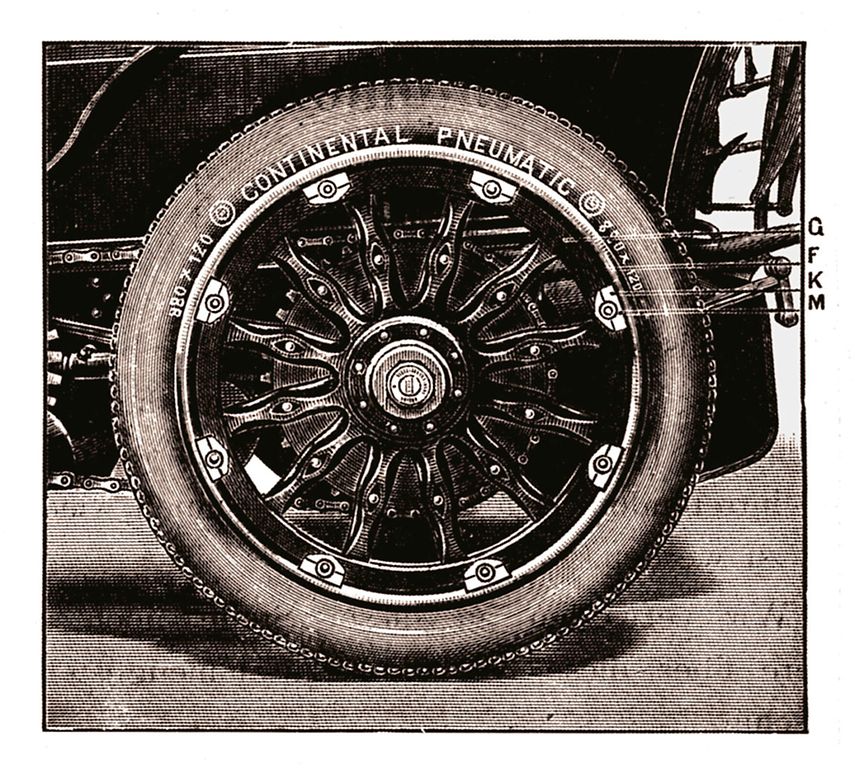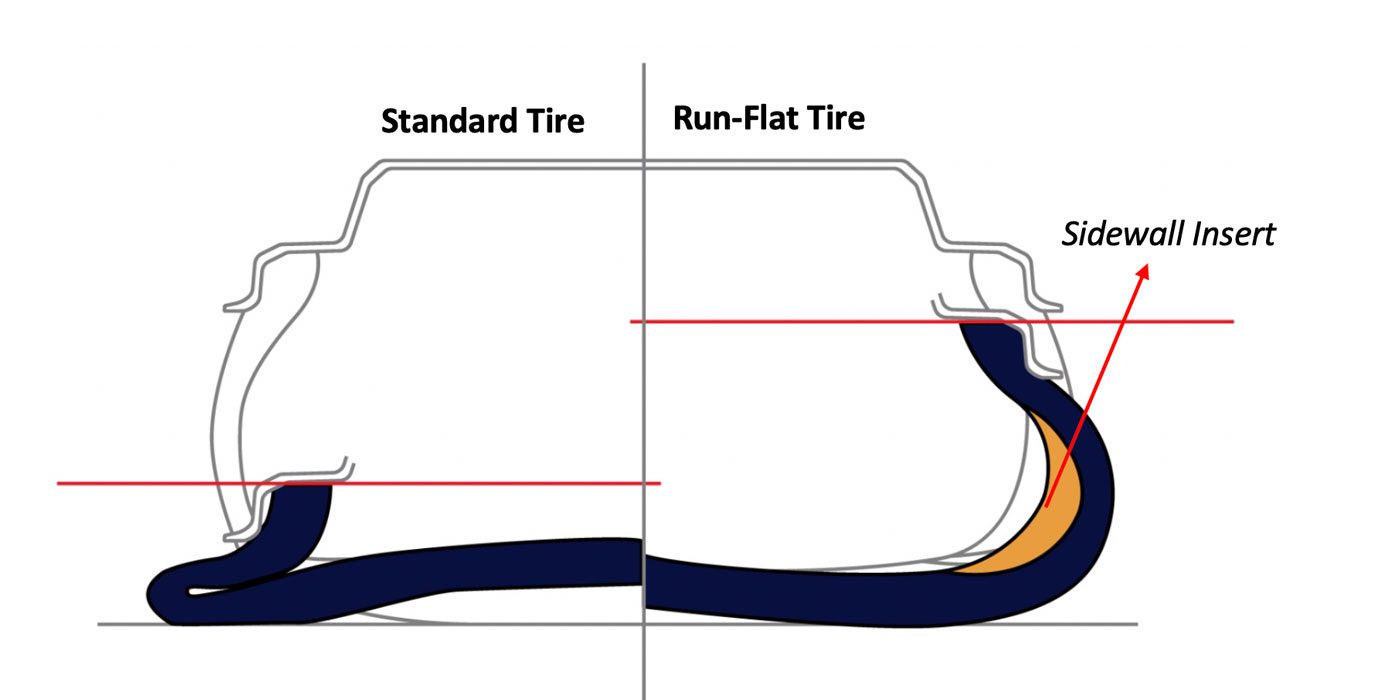When you get in your car every day, you’re probably not thinking about its tires. However, quality tires are integral to the safety, comfort, and environmental impact of your car, and you have the innovative evolution of tires to thank for that.
Early Tires: 3500 BC to 1895
Before tires (and automobiles, for that matter) were even a thought, one of humankind’s greatest inventions appeared in 3500 BC: the wheel. Wheels were used in everything from agriculture to chariots to toys. At first, wheels were made with rocks, wood, and clay; spokes and iron rims were respectively added by the Celtics and Egyptians for greater speed and strength.
Leather was eventually added to the tire and was later replaced by solid rubber, but the tire did not go through many major changes until 1847 with Robert William Thompson’s patented pneumatic tire. The pneumatic tire uses compressed air in a rubber wheel and marked the true beginning of the evolution of tires.

However, Thompson’s air-filled tire did not get put into production until John Boyd Dunlop created the first successful pneumatic tire in 1888. Dunlop’s inspiration was his son complaining about the uncomfortable bike rides with his bike’s solid rubber tires. Also in 1888, Carl Benz invented the first gasoline car; the car included pneumatic tires on the spoke wheels of the car to absorb shocks and soften the ride.
In 1895, André and Edouard Michelin became the first to use pneumatic tires on an automobile. They sparked wide demand for the tires when they drove on them in the 1895 Paris-to-Bordeaux automobile race.
Innovations in Tire Materials: Early to Mid 20th Century
Many innovations came in the first decade of the 20th century to improve upon the pneumatic tire. In 1904, Continental Tire presented the world’s first automobile tire with a patterned tread. The tread is the part of a tire that comes in direct contact with a road surface, and it is made out of thick rubber to protect the tires’ carcass and breaker.

Photo Credit: Continental
In 1908, Frank Seiberling invented grooved tires with improved road traction, and Continental invented the detachable rim for sedans to help save time and effort when changing a tire. In 1910, the B.F. Goodrich Company added carbon to the rubber in the tires to make them last longer.
Du Pont industrialized synthetic rubber in 1931, allowing the tire industry to increase tire quantity and quality because it no longer depended just on natural rubber that mostly came from Southeast Asia. In 1937, Goodrich invented the first synthetic rubber tires made of a patented substance called Chemigum which is a type of resin.
The innovation of synthetic rubber tires coincided with the United States’ increased need for tires during World War II. Additionally, the natural rubber supply in the South Pacific was cut off from the United States. As a result, the U.S. government joined forces with the rubber companies, the petrochemicals industry, and university research laboratories to expand the U.S. synthetic rubber industry from 231 tons of general purpose rubber per year in 1941 to 70,000 tons per month in 1945.
Increased Tire Safety and Sustainability: End of the 20th Century to Now
Following the war in 1946, Michelin developed radial tires. Unlike the old bias-ply tires which were strengthened with fabric bands, radial tires were strengthened and stiffened with steel radial bands, enhancing their durability and fuel efficiency. American companies resisted the radial tires for two decades because it meant a massive redesign of the automobile suspension systems.

Photo Credit: Tire Review
However, in 1968, the consumer advocacy publication Consumer Reports awarded its two top spots to radial tires, citing longer life, increased safety and handling, and lowered costs. In addition to the high ranking, Americans demanded cars with better gas mileage following the 1973 gasoline crisis when gas grew from 38 cents per gallon to 55 cents per gallon (when adjusted for today’s inflation, that means that a $20 tank of gas would have cost about $106). As a result, the more fuel-efficient radial tires became much more commercialized and popularized in America.
From the late 1970s and on, tire safety was at the forefront of innovations. For example, run-flat tires were designed in 1979 to maintain a vehicle at a speed of up to 50 mph without having to change the flat tire. The run-flat tire can maintain a constant driving speed even with scratches, holes, or tire abrasion, protecting the driver from a variety of accidents.
Additionally, following the massive Firestone recall in the 1990s, the US Congress mandated the use of Tire Pressure Monitoring Systems in all passenger vehicles to help warn drivers of under-inflated tires.
In addition to safety, eco-friendly and sustainable tires that increase fuel savings and reduce harm to the environment have been increasingly developed. For example, Continental Tire launched the first environment-friendly passenger tire in 1993: ContiEcoContact. This was the first tire to combine environmental benefits and economic aspects with driving. Many sustainable tires have followed, like Hankook’s Kontrol Technology that replaces oil byproducts with eco-friendly materials and designs tires that reduce rotational resistance and the amount of fuel used for driving.
The Future of Tires: 2022 and On
Looking ahead to the future, sustainable tires will continue to be designed and created. For example, the SMART Tire Company, in partnership with NASA, is in the process of developing completely flat-proof, non-pneumatic bike tires by 2022 that are created with the same technology used for Mars Rover missions. SMART claims that these tires will produce less waste and need to be disposed of less frequently than standard rubber tires.
Continental Tire is even using Russian dandelions instead of rubber to create more sustainable tires. Since these dandelions could be industrially cultivated and don’t require an exceptionally special type of soil, it would be possible to grow the dandelions in the region of the tire production plants, significantly reducing the output of CO2.
For more information about the technology and sustainability of tires, tune in to Tomorrow’s World Today’s “The Tires of Tomorrow” streaming NOW on Science Channel GO and Discovery GO!







